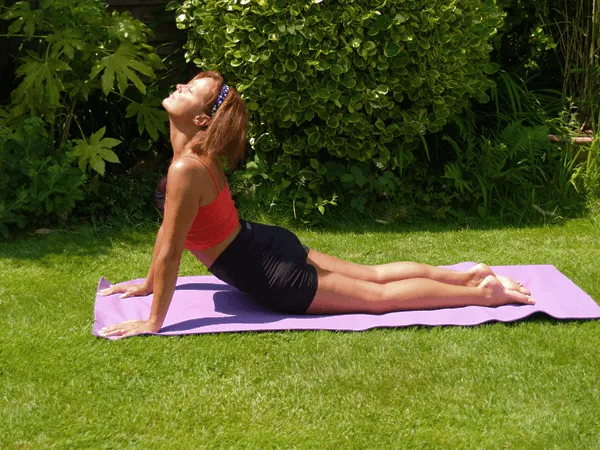Before you start anything in your life, especially a practice like yoga, you should examine your intentions. What is my motivation and drive in this direction? Why do I want to start a yoga practice? In case you need some help, I’ll give you MANY reasons why.
1. Increased Internal Health Benefits
Just by starting a yoga practice you can receive instant internal health benefits. Studies show that people who start practicing yoga experience the following positive side effects: lower blood pressure, increased blood circulation, optimal organ health, increased metabolism, higher immunity to non-critical illnesses such as the cold or flu, consistent digestion, optimal pulse rate and increased pain tolerance.
2. Increased External Health Benefits
There are also the obvious external health benefits you can achieve through a consistent yoga practice. Yoga can assist with a healthy form of weight loss, increase your core strength, give you more productive and positive energy throughout the day, help with your posture, slow down the aging process, assist with your balance and equilibrium, provide you with more positive use of your body and your overall mobility and aid in an overall healthy increase of sexuality.
3. Positive Emotional Benefits
Most people who practice yoga feel an immediate relief from emotional pain and stress. Because typical yoga practices focus on concentration, calmness and self-acceptance, many positive side effects that practitioners experience are in the form of stress relief, more balanced moods, an increased sharpness in memory and lessened feelings of depression.
4. Body Chemistry
As you start your yoga practice, you may not notice some internal positive changes, but your body will be experiencing a few healthy side effects. Some of these would be lowering of your cholesterol, optimizing your lymphatic system, increasing the endocrine functions, increasing the level of oxygen in your red blood cells, significantly lowering triglyceride levels which can lessen your risk of high blood pressure and heart disease. It can bring your sodium and glucose levels down. Studies have shown that yoga can even increase the level of Vitamin C in your body naturally.
5. Exercise Benefits
There are people who are unaware that yoga is also a form of exercise in addition to its function of calming your mind. This synergy makes for a great combination. A consistent yoga workout will build more muscle tone in your body and provide you with a more balanced workout than just going to the gym and “working on abs or legs”. It will help increase your overall joint motion and make you more flexible and aid in hand-eye coordination. Yoga will also provide a more controlled and healthy breathing cycle which involves more oxygen-rich air into your lungs, increases your core muscle system which can improve your overall endurance, and will also provide you with an increased metabolism.
6. Disease/ Symptom Prevention or Elimination
Yoga practices have been suggested by many health professionals to decrease risks and help treat symptoms of many illnesses such as heart disease, Alzheimer’s, carpal tunnel, asthma, arthritis, cancer, diabetes, epilepsy, OCD, menopause, and back pain.
When you look at this list, there will not be any benefits you’re going to NOT want, but some will help increase your personal motivation. The positive side effects described above can be key in choosing the right class for you. Here are some different yoga types that a beginner might be interested in reviewing before picking their specific practice:
Vinyasa: A flowing connection to movement and breath, always different and creative in sequencing .
Hatha: A slower movement with intentional postures and focus.
Bikram: Bikram’s classes run exactly 90 minutes and consist of a set series of 26 postures and 2 breathing exercises. Bikram Yoga is ideally practiced in a room heated to 105°F.
Shivananda: A spiritual type of Hatha practice.
Anusara: A more powerful version of Hatha, with an awakening of the heart.
Restorative: Only a few floor postures held for longer periods of time to open the body and relax the mind.
Ashtanga: Progressive techniques of breath, posture and movement, cleanse, stretch and strengthen the body as well as focus and calm the mind.
Some are more vigorous, like Ashtanga and Vinyasa, while others like Shivananda and Restorative are made to mellow and detox the body. It is highly beneficial to explore each style to see which one feels right within you.
There will be one that’s right for you!
I enjoy the more physical and creative sequences of Vinyasa flow; therefore that’s what I mainly teach. It is nice to relax and unwind with a nice Restorative class at times too, so be sure to explore them all, and with different teachers. All teachers have different styles, levels, voices, and ways of explaining. Once you find one you love, you will be inseparable. I will be covering different postures in the weeks to come, but don’t be shy to Google what yoga postures are good for your particular needs!
– Michelle Walsh
After studying under Shri Yogi Hari at the Sampoorna Yoga Ashram in Miramar, FL, Michelle is certified in Yoga Thai Massage and teaches Yoga in South Florida, continuously raising the bar for both herself and her students.
Visit Michelle’s website at http://www.michelleannyoga.com/


